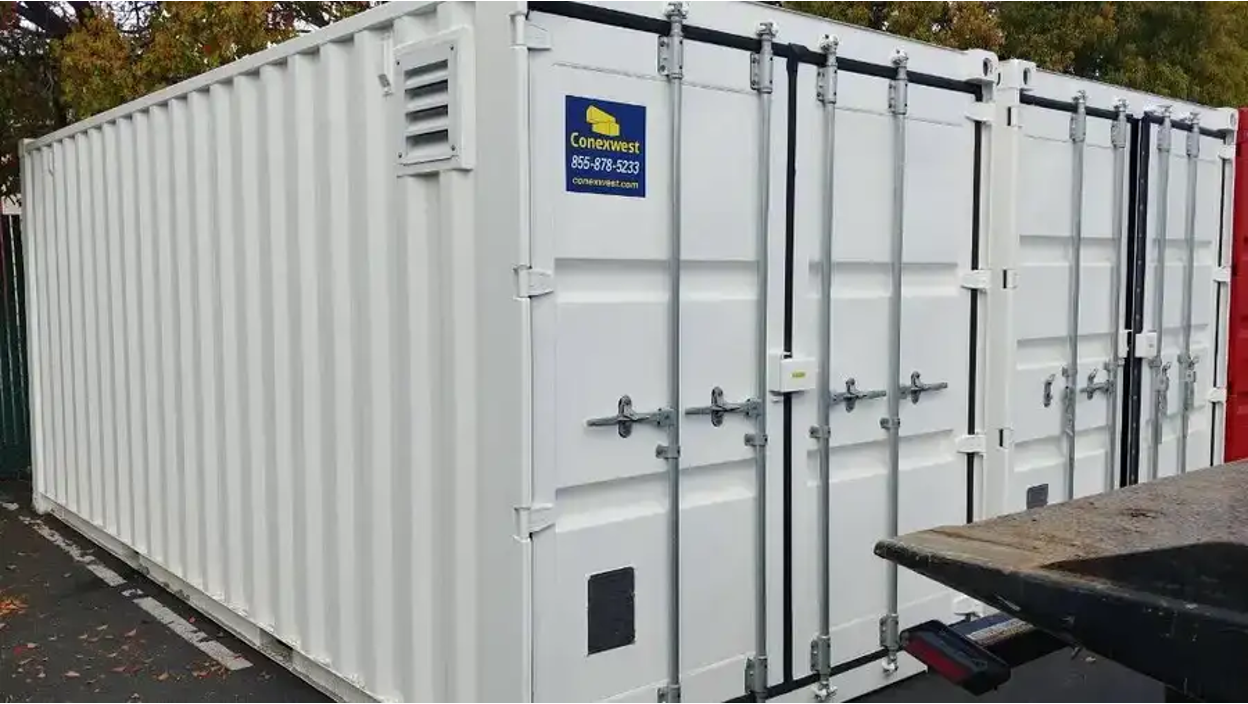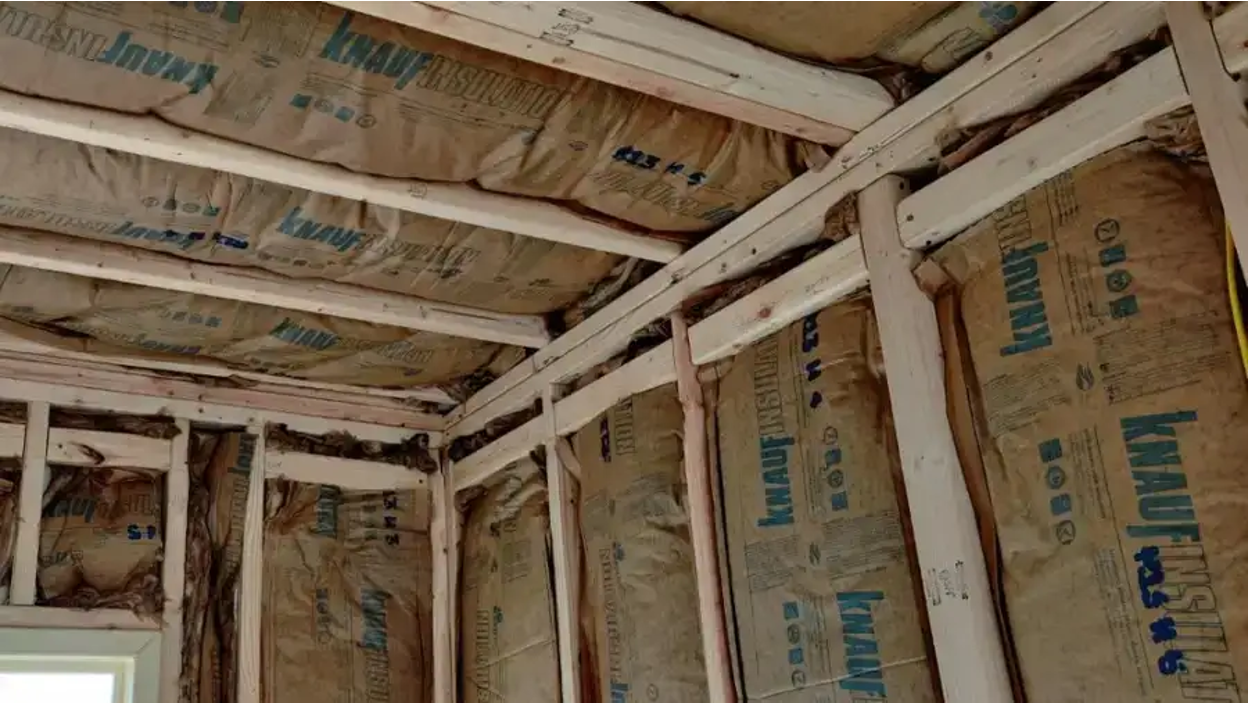Shipping Container Sweating: What Causes It and How To Stop It
Get a quoteWhat Causes Shipping Container Sweating and How to Stop It
Key Takeaways
- Shipping container sweating, also known as "container rain," occurs due to temperature changes inside the container.
- Temperature fluctuations, dew point, and humidity are the primary causes of container sweating.
- Effective prevention methods include insulation, ventilation, and using desiccants.
- Conexwest’s comprehensive shipping container fabrication solution includes insulation and ventilation services.
What Is Shipping Container Sweating
Shipping container sweating, also known as condensation, occurs when warm, moist air inside a shipping container cools down and reaches its dew point, leading to the formation of water droplets on the container's surfaces.
This phenomenon is common during transport or storage when temperature fluctuations are significant, such as moving between different climates or experiencing day-to-night temperature changes.
Damage Caused
- Corrosion and Rusting: If metal parts inside a container or cargo are exposed to moisture for too long, they can corrode, which can really affect how long they last and their overall integrity.
- Mold and Mildew Growth: Condensation can create a damp environment that's perfect for mold growth. This can damage packaging and products, especially in industries like food storage where hygiene is a big concern.
- Packaging Damage: Cardboard and other packaging materials can get soaked, which can cause structural failure and loss of product integrity.
- Detached Labels: If there's too much moisture, labels can come off products, which makes inventory management harder and could even lead to compliance issues.
Conexwest, a leader in shipping and storage solutions based in Northern California, offers new, used, and refurbished containers from 10ft to 45ft, with fast delivery within 3–7 days and container fabrication options like adding shelves and locks. We serve over 10,000 customers nationwide, including prestigious clients like the U.S. Navy and Google. As an ISO 9001 and AWS-certified company, we ensure top quality and competitive pricing. |
What Causes Shipping Container Sweating
- Temperature Fluctuations: Significant changes in temperature, especially when moving between different climates or during day-to-night transitions, can lead to condensation. Warm air inside the container cools down rapidly, causing it to reach its dew point where moisture condenses into water droplets.
- High Humidity Levels: When the air inside the container is saturated with moisture, it increases the likelihood of condensation forming on cooler surfaces within the container. This is especially problematic in humid climates or during seasons with high humidity.
- Inadequate Ventilation: Poor airflow can trap warm, moist air inside the container, preventing it from escaping and leading to higher humidity levels. Without proper ventilation, moisture accumulates and condenses on the walls and ceiling of the container.
- Cargo Moisture Content: The type of goods stored in the container also contributes to moisture levels. Items such as cardboard, wood, and certain foods can release moisture into the air, worsening condensation problems.
- Air Space: The amount of open space within a container affects moisture accumulation. Larger air spaces can hold more humid air, increasing the chances of condensation forming as temperatures fluctuate.
- Container Usage: Frequent opening of doors and loading/unloading activities can introduce humid air into the container, further contributing to moisture buildup.
How To Stop Shipping Container Sweating

Adding louvered vents is an affordable way to prevent shipping container rain.
1. Insulation
Insulating the container helps maintain a stable internal temperature, reducing the likelihood of condensation forming. Materials such as foam boards, spray foam, or fiberglass can be used to insulate the walls, ceiling, and floor effectively.
2. Ventilation
Installing additional vents (like louvered vents) enhances air circulation within the container, allowing moist air to escape and drier air to enter. Vents should be strategically placed to create cross-flow, typically with one vent near the top and another at the bottom of the container. Mechanical ventilation using fans can also promote airflow during loading and unloading.
3. Dehumidifiers
Using a dehumidifier can really help to bring down the humidity levels inside the container by getting rid of all that excess moisture in the air. This method is great for environments with consistently high humidity.
4. Desiccants
You can also use desiccants (like silica gel or calcium chloride) in the container to absorb moisture from the air.
5. Appropriate Pallets
Using dry, non-wooden pallets (such as plastic) instead of wooden pallets can help minimize moisture introduction into the container. Wooden pallets can retain moisture, contributing to humidity levels inside.
How Conexwest Can Help With Shipping Container Fabrication

Conexwest’s experts can handle various types of insulation like fiberglass and spray foam.
At Conexwest, we are dedicated to providing comprehensive shipping container fabrication services. Here’s how we can assist you:
- Customization Options: We provide a wide range of modifications, including adding windows, partitions, and shelving systems, so you can enhance the functionality of your container for various applications like storage and residence.
- Insulation and Ventilation Services: To combat issues like sweating and condensation, we provide insulation solutions using high-quality materials such as fiberglass. This insulation helps maintain a stable internal temperature. Additionally, we can also install vents that improve air circulation within your container.
- Quality Assurance: Our skilled technicians are trained in the latest trends and technologies in container modifications so that all work is completed to the highest standards.
- Transparent Pricing: We believe in upfront pricing with no hidden fees to allow you to plan your budget effectively.
Frequently Asked Questions (FAQs)
- How does container sweating affect the safety of goods?
Container sweating poses a significant risk to the safety of goods by introducing unwanted moisture into the shipping environment. This moisture can lead to mold growth, corrosion, and spoilage of products, particularly those sensitive to water exposure.
- Are certain types of cargo more susceptible to sweating?
Yes, items such as paper products, textiles, and food are particularly vulnerable to moisture damage due to their ability to absorb water. Metal items can also rust if exposed to excessive moisture.
- What is the difference between container sweat and container rain?
Container sweat occurs on the walls and ceiling of the container, while container rain refers to the accumulation of condensed water droplets that eventually drip down onto the cargo. Both result from similar condensation processes but differ in their manifestation.
- Can shipping container sweating be completely eliminated?
While it may be challenging to completely eliminate container sweating, it can be significantly minimized with the right strategies and precautions. By implementing effective insulation, ventilation, and moisture control measures, you can drastically reduce the chances of condensation forming within the container.
- How does Conexwest help with shipping container sweating?
We provide insulation and ventilation services designed to combat sweating in shipping containers. Our insulation solutions help maintain a stable internal temperature, while our ventilation options improve airflow, effectively managing humidity levels to prevent moisture buildup.
